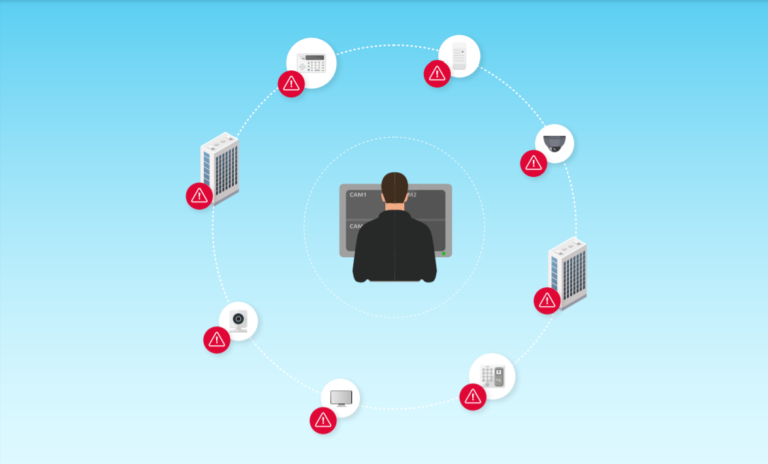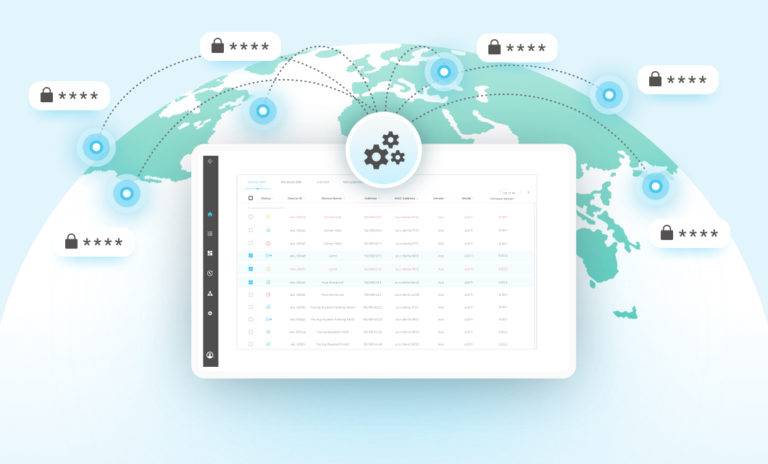Imagine this scenario: Petersburg Plastics, a manufacturing facility located in rural Oklahoma, is a secure access site that accepts deliveries 24×7. The site’s unmanned entry gate has not been working for hours, and vehicles are backed up for half a mile down the road. With no physical presence of a security team, the facility’s IT management only hears of the issue from a disgruntled vendor complaining about his driver’s delayed schedule. Fixing the gate has now become a company priority as the vendors have been unloading the raw materials at the gate, exposing them to the elements and the risk of vandalism.
Ultimately, the problem turned out to be a simple network connectivity issue that should have taken IT management only moments to fix. After all, how difficult can it be to reset the entry gate?
Turns out it was more difficult than it had to be. With the facility’s secure access made up of multiple sensors and network-connected switches, the various teams involved in physical security had to take multiple trips to the site to isolate the exact device with the malfunction, identify whether a new part was required, and return again to resolve the issue. When physical security management is done manually, companies like Petersburg Plastics will always be in a reactive mode, resulting in significant cost accruals in terms of time and resources, and possibly even greater losses if goods – or customers — are mishandled along the way.

Challenges faced by IoT operational teams
As enterprises become increasingly reliant on IoT devices to power their essential operations, teams managing these IoT devices struggle with keeping them compliant and functioning as expected. Without centralization, they must manage these devices using manual processes on a device-by-device basis — a practice that is both costly and inefficient. With no streamlined way of automating day-to-day physical security operations, the enterprise cannot manually monitor and control the numerous firmware version upgrades, passwords, certificates, and other device issues that arise over time — resulting in sub-optimal device maintenance.
This lack of visibility means it could take days, weeks, months to detect a problem with the device, presenting a significant challenge to any IoT team, but especially when there could be huge implications. Imagine if campus security could not investigate a crime in a dorm because the lobby security camera was down, or if an office break-in was not covered by insurance because the access control was not fully operational.
Even when IoT teams do have real-time awareness of any device malfunction, they often lack visibility as to the cause of the issue. Or, they may not be able to physically access the site. Since the pandemic, an increasing number of enterprises have adopted processes that limit the number of people on site, severely hampering the ability of technicians to carry out their tasks. Any extended downtime of physical security devices –no matter the cause — can result in issues of compliance, cost, as well as safety.
The fact is that an outage will inevitably occur somewhere. Will your enterprise IoT team be able to implement a quick fix, or will the team be thrown into crisis mode – as with Petersburg Plastics?
Help is on the Horizon – SecuriThings Enterprise
SecuriThings Enterprise is the first software-only solution to automate the operational management of large-scale IoT deployments. Offering both edge protection and predictive maintenance capabilities for IoT devices, the solution empowers enterprises to enjoy full visibility over their physical security environment, take control of all maintenance of connected devices, and cut costs in the process. With SecuriThings, IoT teams are empowered to perform remote problem resolution for the majority of issues, digitizing the entire process and minimizing the need for manual interventions. With SecuriThings deployed, Petersburg Plastics would not have faced a massive loss of raw materials. Instead, the malfunctioning entry gate could have been detected in real time and may have been fixed remotely on the spot, no truck rolls required.
For more information about how SecuriThings Enterprise can save your enterprise a significant amount of time, money, and stress, click here.




